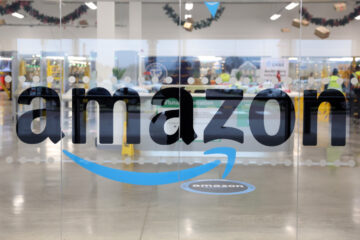My grandfather used to drink Moxie, a soda sold in New England that tasted like bitter motor oil. By every standard, it was awful, yet somehow my grandfather and presumably other older men stood by drinking it.
No matter how awful a soda is, it seems that someone loves it.
Related: Iconic liquor brand in Chapter 11 bankruptcy faces liquidation
When you visit the Cool Spot at Epcot, a Coca-Cola tasting room, they offer Beverly, a bitter soda that Coca-Cola sells in Italy. Pretty much every American who tastes the drink seems horrified, but in its corner of the world, Beverly has remained popular since its introduction in 1969.
People have wildly differing tastes, and that makes it challenging for Coca-Cola and PepsiCo (PEP) to take any product off the market.
While every soda is not equally popular, it seems like every soda has its fans. If Coke produced Diet Coke Cauliflower and Pepsi released Pepsi Skunk, it seem like at least a few people would declare those flavors their favorites and be upset when they get pulled from shelves.
💵💰Don’t miss the move: Subscribe to TheStreet’s free daily newsletter💰💵
It’s similar to the diehard fans trying to bring Coca-Cola’s TaB back. An early try at a diet soda, TaB tastes more like the can it comes in than cola, yet tens of thousands of people have petitioned Coke to bring it back.
Every soda, even the really terrible ones, seem to have its, fans which has made things hard on Coke and Pepsi when it comes to discontinuing flavors.
Some Pepsi flavors are always meant to be limited edition.
Image source: PepsiCo Beverages North America
PepsiCo quietly kills multiple flavors
When Coca-Cola discontinues a soda, it often happens without any fanfare. Customers notice when the product stops showing up in their grocery store.
That can be a brutal way to lose a beloved product because there’s no chance to say goodbye, or at least hoard some to drink later.
PepsiCo operates in a similar way, but on its website, the company has a product locator. That web page will show when an item has been discontinued but may still be in stores.
It allows fans of that drink to try to hunt some down before it goes away forever. On the Pepsi website, fans can see that the company has recently released Pepsi Wild Cherry Cream and Pepsi Zero Sugar Wild Cherry Cream.
They can also see that the company has discontinued a number of flavors including:
Pepsi LimePepsi PeachNitro PepsiNitro Pepsi Vanilla
On the Mountain Dew side of the business, PepsiCo has ended production of a number of flavors as well:
Mountain Dew Major MelonMountain Dew Zero Sugar Major MelonMountain Dew SparkMountain Dew Spark Zero SugarMountain Dew Purple Thunder Zero SugarMountain Dew Caffeine FreeMountain Dew White OutMountain Dew Kickstart Mango LimeMountain Dew Kickstart Original DewMountain Dew Kickstart Blueberry Pomegranate
Pepsi’s website allows fans of these drinks to search for them. Most are no longer available, but some may be found in very limited quantities.
Pepsi plans to grow its U.S. business
While international growth has been a driver for the PepsiCo in recent years, PepsiCo’s CEO sees a big opportunity to expand business in the United States. He reinforced this when responding to a question during the company’s first-quarter earnings call.
“Now, what I disagree with you is in the fact that the U.S. business cannot grow at a faster speed than it is growing today. I think the U.S. business, both beverages and foods, will continue to grow at a very good rate in the U.S. And when you think about the overall opportunity, both from the better execution to evolving the portfolio, to moving into new channels like away from home, we have tremendous opportunities to take our brands into new spaces, leverage the capability of our business,” he shared.
The CEO was passionate about his company’s home market.
“And now that we have an operating model that will be more integrated in the U.S. that will give us more resources, will be less duplicated in some areas and synergize in other areas where we can drive growth in new service models direct-to-consumer, direct to B2B, whatever we choose to play. So, I think the U.S., we see it as a growth driver. We see it as a source of funding for the rest of the world, but also a growth opportunity for the company, way above where we are today,” he added.
Related: Starbucks CEO admits the struggling chain made a major mistake


